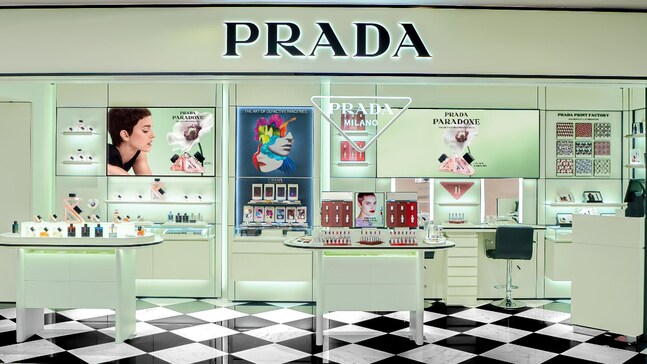- Home
- Beauty
India's luxury beauty landscape is growing rapidly
From Prada to Armani—every luxury beauty brand wants a piece of India. HELLO! explores how the market is growing at a rapid pace in the country

This year saw the Indian beauty market being flooded with the arrival of luxury beauty brands across the country; from Prada to Gucci to Armani. The ever-growing beauty business of India keeps making space for new luxury beauty brands, with international beauty brands watching from afar, yet very closely. Why wouldn’t they? According to a report by Kearney and LUXASIA, India's luxury beauty market is projected to grow to $1.6 billion (approximately ₹14,000 crores) by 2028 and $4.0 billion (approximately ₹35,000 crores) by 2035. At this rate, it would only be natural for international luxury beauty brands to find their audiences in India, the world's most populous country which ranks 4th in the world for HNIs. Beauty houses such as Nykaa, Sephora and most recently, Tira, have seen massive growth in the post-Covid world, rapidly growing their stores in major metros, on-boarding foreign brands and growing an online presence for the rest of the nation.
Luxury beauty brands are seeing the untapped potential that Indian markets hold. While many beauty brands such as Dior and Chanel have long been present with dedicated beauty stores, they have been enjoying massive success in the recent past. Newer beauty brands such as Armani Beauty, which launched in Mumbai this year and Prada Beauty, which arrived in Delhi; are launching their beauty-specific stores in major metropolitan cities.
Retailers like Nykaa announced exciting new launches in the form of Chanel fragrances, and YSL Beauty on Tira, which are now available in their online and retail stores. Last year, Augustinus Bader made their way to India through Tira Beauty. The partnership between Shoppers Stop and ELCA, which is a subsidiary of The Estée Lauder Companies, anchors one of India’s most expansive and high-performing prestige beauty networks that spans over 150 touch points across 30 cities. Their partnership has been responsible for bringing global icons like Bobbi Brown, and Clinique into the mainstream conversation, while deepening affinity for brands such as Jo Malone London, Estée Lauder, and Tom Ford Beauty.
Apart from European and American beauty brands, South Korean beauty brands are faring equally well, if not better. K-beauty brands such as Milktouch, Sungboon Editor, and SKIN1004 are exclusively available on Tira. Many K-beauty brands, such as Laneige, Beauty of Joseon, COSRX, and TIRTIR, have been viral in the space ever since their entry in Indian markets.
(Also read: Gucci Beauty and Kilian Paris comes to India, Kay Beauty goes global)
Even though these coveted brands have a fan following, the competition in the Indian market is tough. India’s own luxury beauty brands are selling premium goods at a similar or lesser price points, which are relevant to its audiences, as they specifically cater to Indian skin and body types. Brands like Forest Essentials and RAS Luxury Oils have successfully been able to connect to Indian audiences alike.
One of the biggest hurdles for luxury beauty brands opening their doors in India is whether their products are made for Indian skin tones. With underlying tones of olive and yellow, most international brands fail to cater to the majority of Indian tones, as their foundations and concealers are too light or too dark for them. Even when it comes to shades of lipsticks and blushes, the concern still stands.
If international beauty brands want to maximise their potential out of Indian markets, beauty inclusivity needs to be their top priority. Many luxury beauty brands have already found this mantra to success. Brands such as Huda Beauty, NARS and Bobbi Brown have found their audiences in the Indian market and are among the favourites for Indian beauty consumers, as they not only have a great range and premium feel, but they can also cater to the diverse nature of Indian skin tones.
(Also read: Louis Vuitton unveils its luxury makeup line, La Beauté)